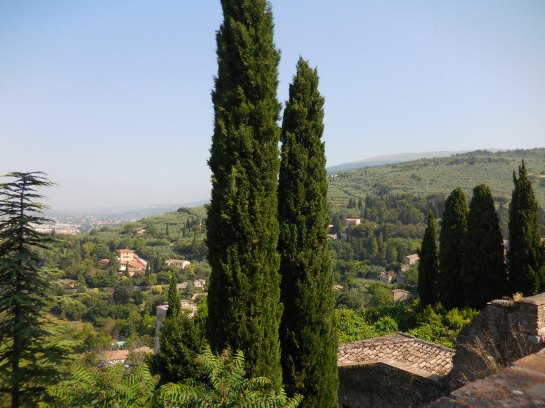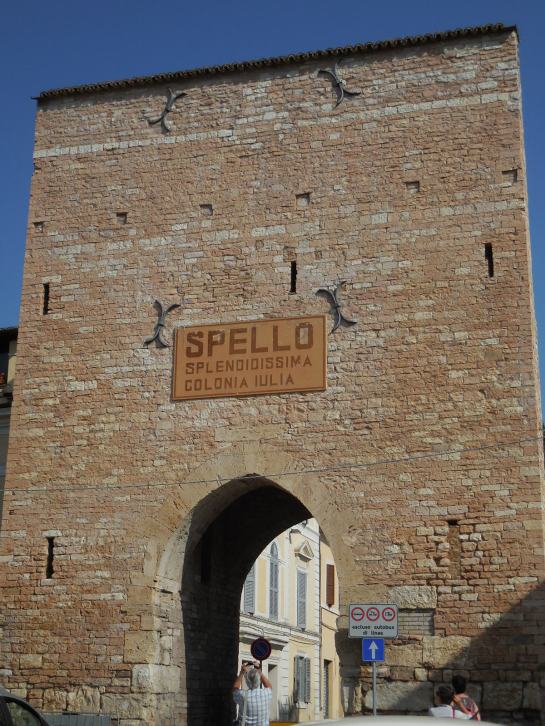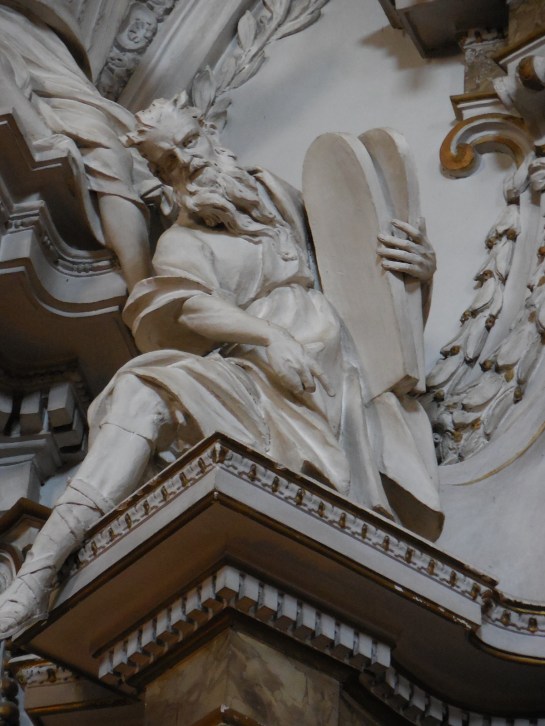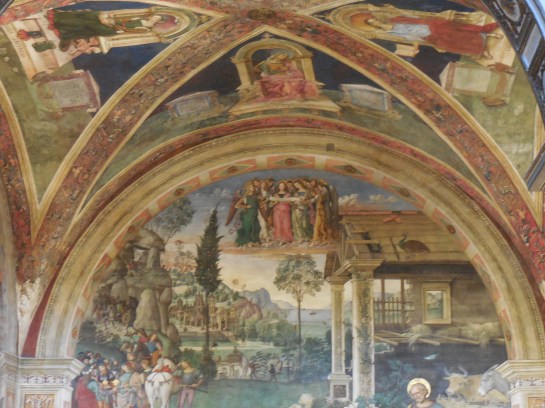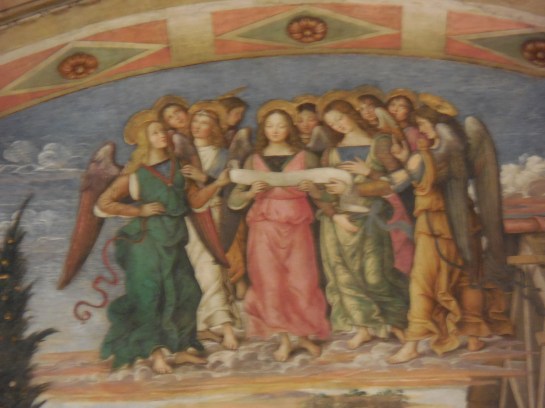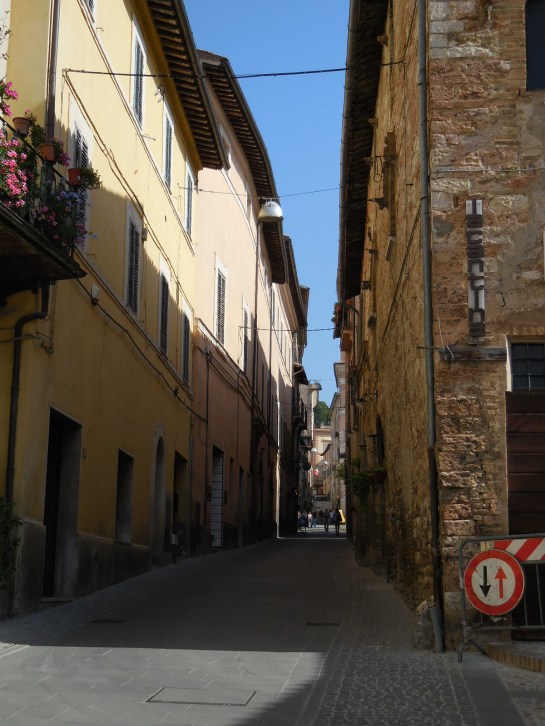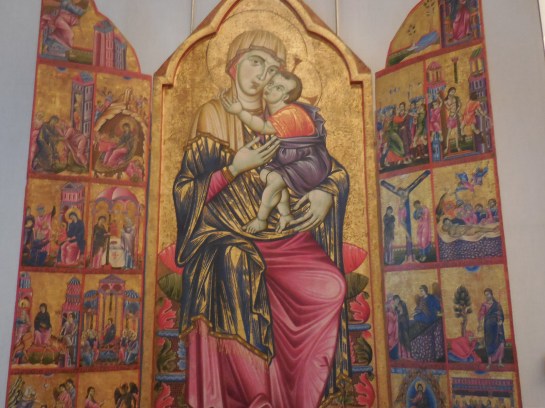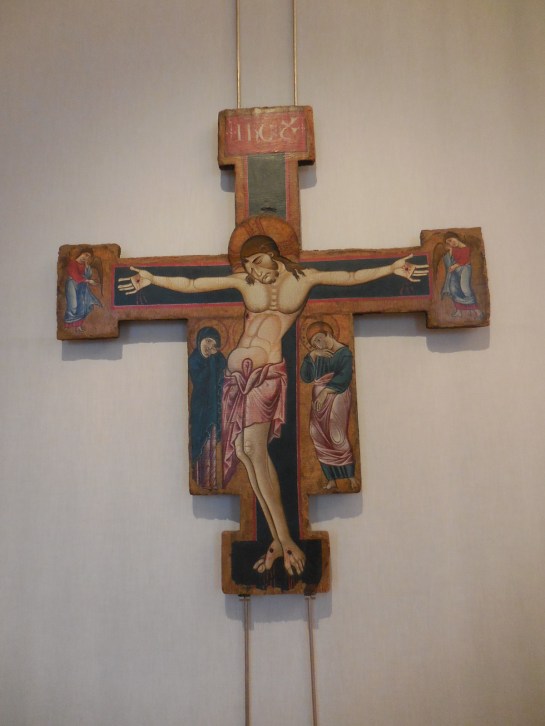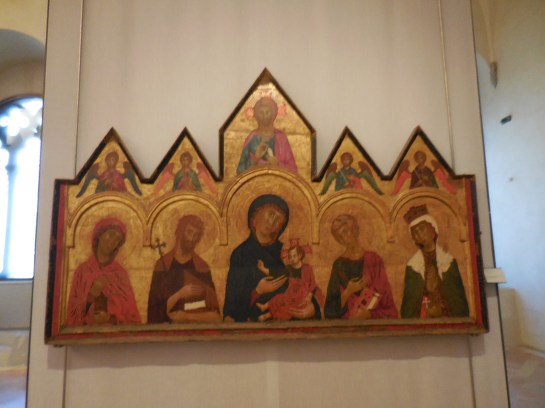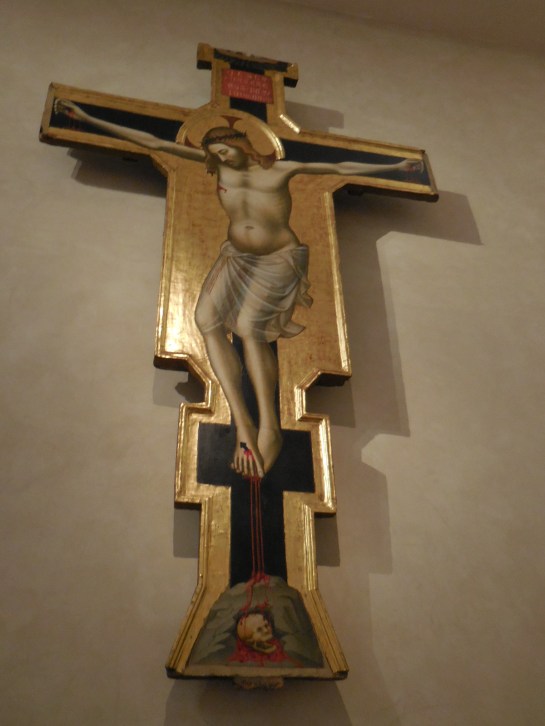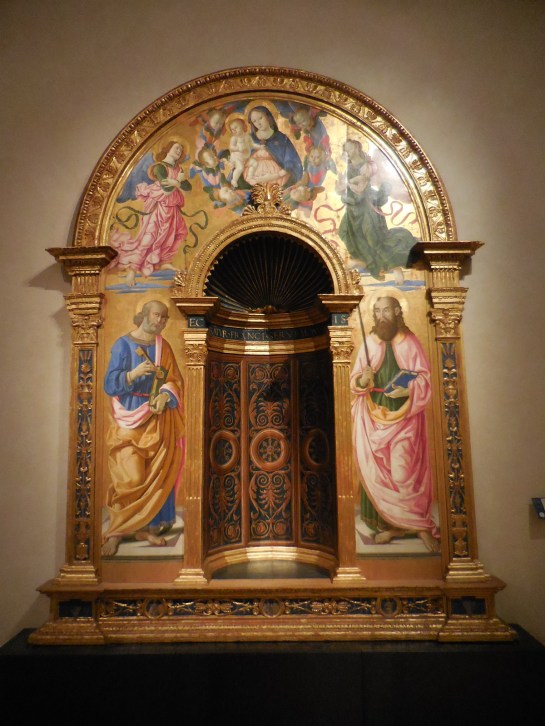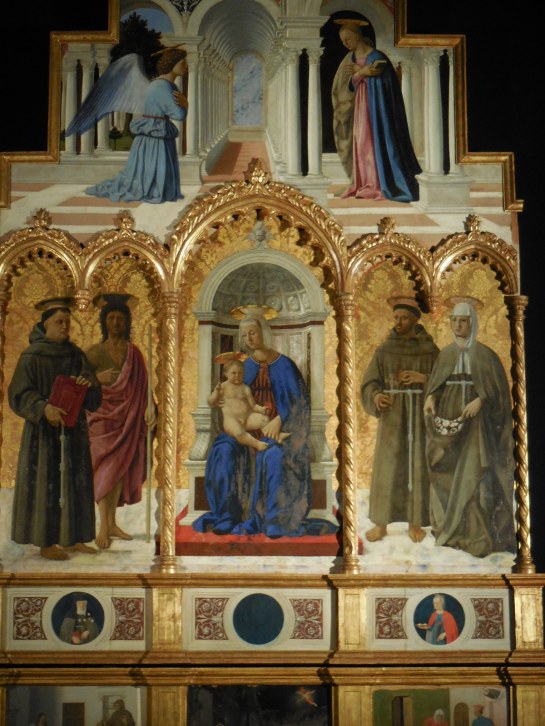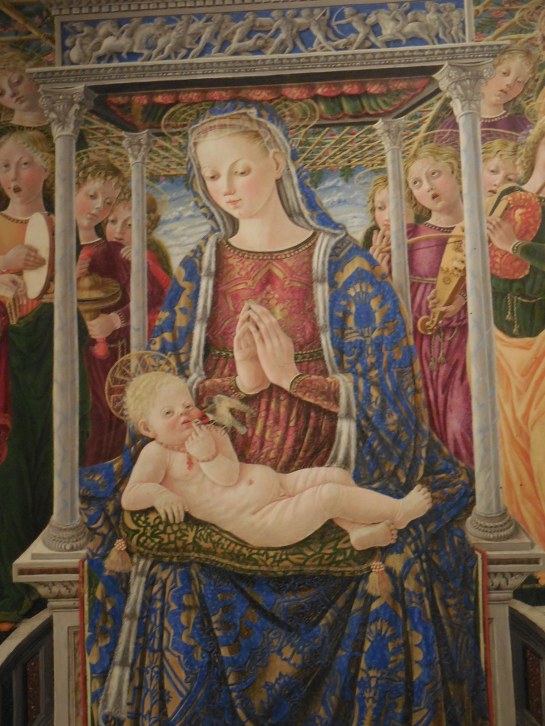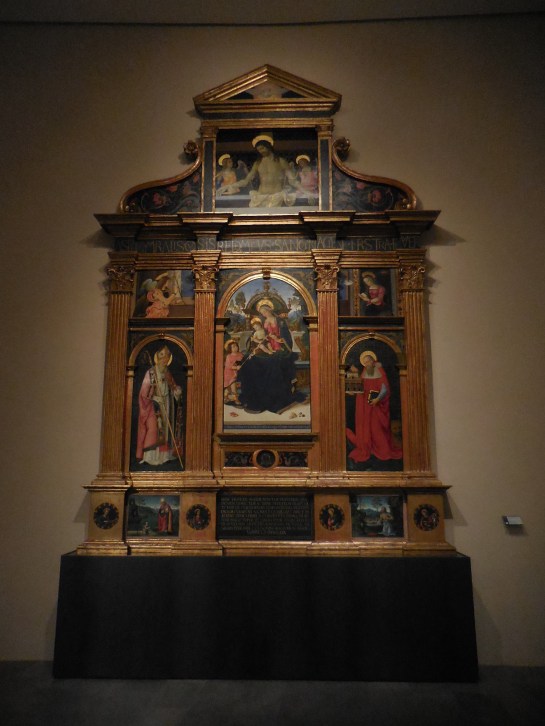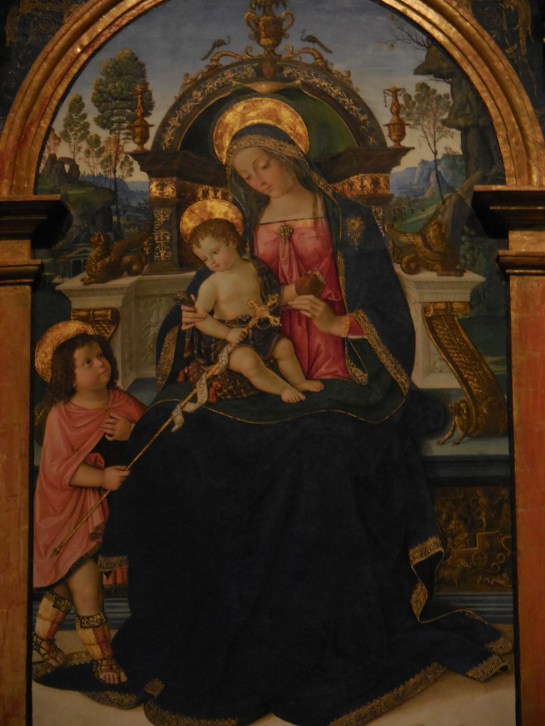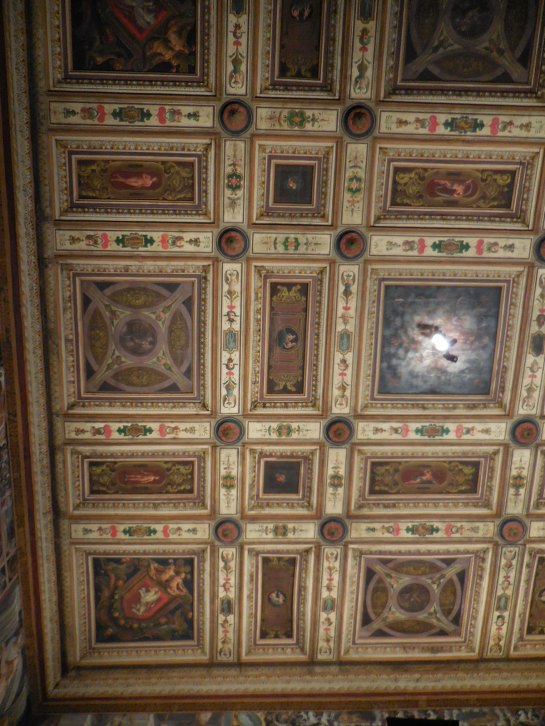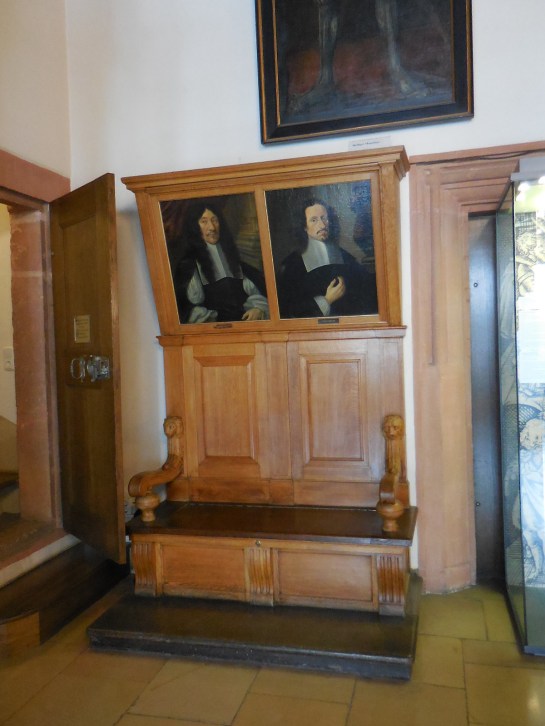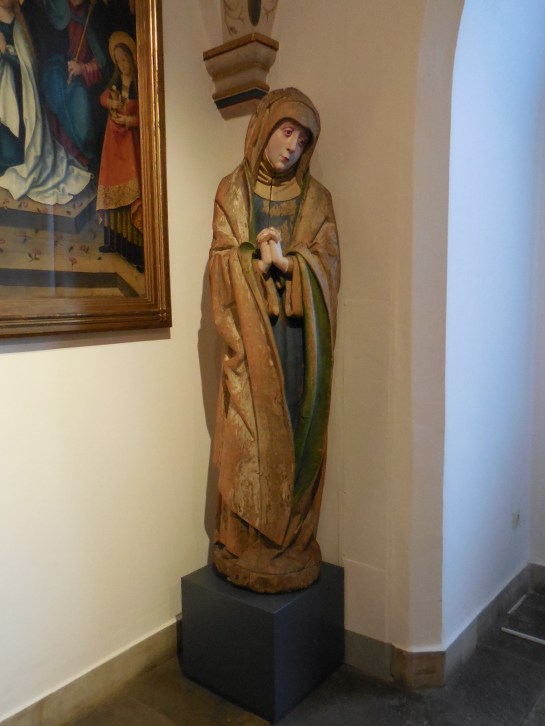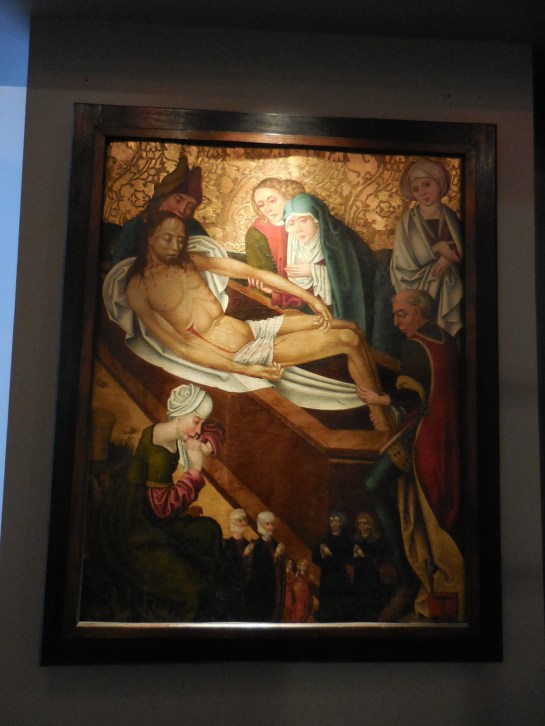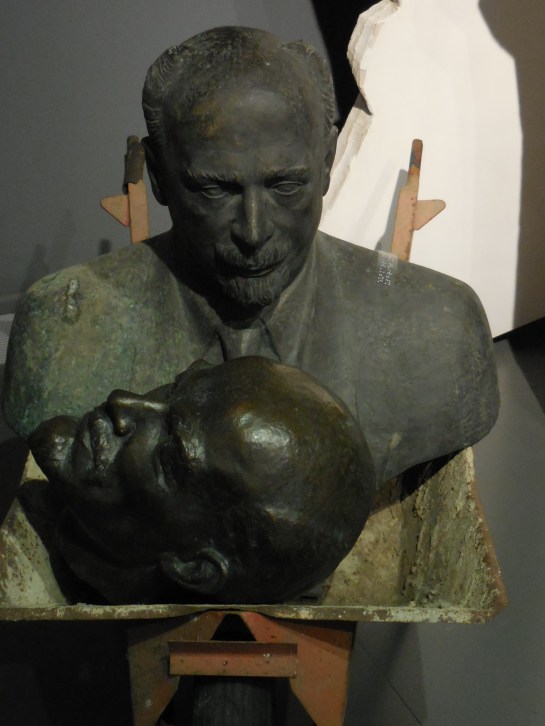
A fountain in Leipzig
When I saw that arsviva offered a day trip to Leipzig, I jumped at the opportunity. I had no idea what to expect, but I had enjoyed their day trips to other places in Germany, such as Nuremberg and Bamberg. Besides, our guide would be one of the best I had come across. With a specialty in architecture, she also had led the thrilling tours of Jan Blažej Santini-Aichel’s creations.
There were many things that awed me about Leipzig. The first and foremost, was, indeed, the architecture – how the modern and historical styles did not clash but rather provided a sort of artistic harmony.

A contemporary statue in downtown Leipzig
The guide told us about the history of the city, and I had read about Leipzig’s trials and tribulations before the trip. During the seventh century, Leipzig got its name from the Slavic Lipsk, which means “a settlement where the linden trees stand.” The town was first mentioned in writing during 1015. It was founded in 1165, soon gaining a reputation as a trade center. The beginning of the 15th century changed the character of Leipzig, as a university was established here, and it became a prominent center of higher education. Goethe and Nietzsche had studied here.

A beautiful book published in Leipzig
The Leipzig Book Fair, the second biggest book fair in Germany, has its origins in the 17th century. Book publishing took off in Leipzig during the 18th century and continued to play a major role until World War II, when the Graphic Quarter was mostly destroyed by bombs. The Battle of Nations in the 19th century took place near Leipzig. The 1813 ordeal pitted Napoleon’s France against the Prussians, Austrians, Russians and Swedes. The allied nations came through victorious, and Napoleon had no choice but to leave Germany. We would visit this monument later in the day.

This painting from the Museum of City History shows the destruction during World War II.
The city became part of the German Empire in 1871, and the years before World War I were rosy. Then, after the war, the Weimar Republic was established, though short-lived. In 1933 the National Socialists took over, and Hitler’s reign of terror would continue until the US army freed the city on April 18, 1945. Then in July of that year, the Americans handed the city over to the Soviets. The totalitarian regime that was called the German Democratic Republic or East Germany existed from 1949 to 1989, when Communism was defeated in Germany in part thanks to the citizens of Leipzig and their demonstrations. Today more than 40,000 students vie for degrees in Leipzig, a truly university town. Leipzig was coined the “City of Diversity” by the German government in 2008.

Gothic and modern architecture in a university building
The Augustusplatz, spanning 40,000 square meters, was a wonder in itself. The Gewandhaus, where the symphony played, and the Opera House took me by surprise, as I usually was not so enthralled with modern architecture. I took special note of the Paulinum, where the current structure resembled a former church that was destroyed by the Communists on this site in 1968. The 2012 creation really brought a sense of unity to modern and historical styles.

The first high-rise in Leipzig
I also was enthralled with the first high-rise building in Leipzig, an 11-storey edifice constructed in the 1920s. Its design was inspired by the clock tower at St. Mark’s Square in my beloved Venice. For a moment, I mentally went eight years back in time and recalled winding through the empty, romantic streets of Venice on a Sunday at seven o’clock in the morning. The experience was magical, to say the least. In the present again: The tall Leipzig building was topped with a ball that showed the phases of the moon and a sculpture of a man ringing a bell. The German words for “Work overcomes everything” stood out on a gable.
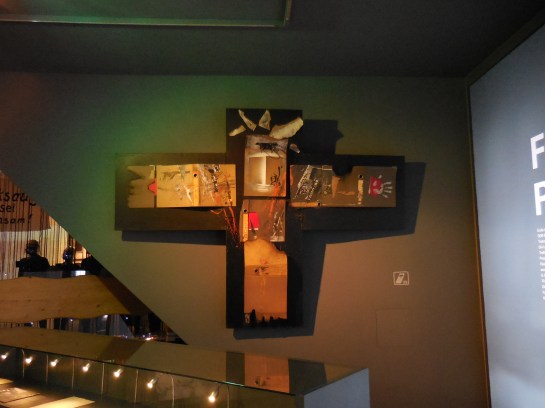
From the Museum of City History exhibition of the modern era
We also spent some time in the train station. No, we were not going anywhere by train, but rather we were admiring the masterful technical achievement that consisted of two entrance halls and two waiting rooms plus 25 platforms. In the early 20th century, this transportation hub ranked as the largest main train station in Europe after the architects transformed four stations into one. It made Prague’s main station look so tiny. I always felt a sense of excitement in train stations. I thought of the many trips I had taken by train. Prague’s train stations were starting points for what turned out to be superb experiences during which I became acquainted with an intriguing part of the country and also, most importantly, got to know myself better. The trips to Olomouc, Liberec, Turnov – each journey provided me with insights about the external landscape as well as the internal landscape of my mind.

A postcard of the Church of St. Nicholas
Unfortunately, it was not possible to take photos in the Church of St. Nicholas, the largest church in Leipzig. I tried to imagine October of 1989 in the church, when citizens crammed inside, protesting against the totalitarian regime and creating a path for democracy. The people of Leipzig really had made a difference in the so-called Peaceful Revolution, and this had been where it all began. On Mondays, ever since the early 1980s, prayers for peace were held here, too. I wondered when there would be peace in the world, if ever. So many tragedies, so much violence rocks the world today. The world was the most dangerous it had been during my 46 years on this earth, I mused. And it only seemed to be getting more and more dangerous day-by-day.
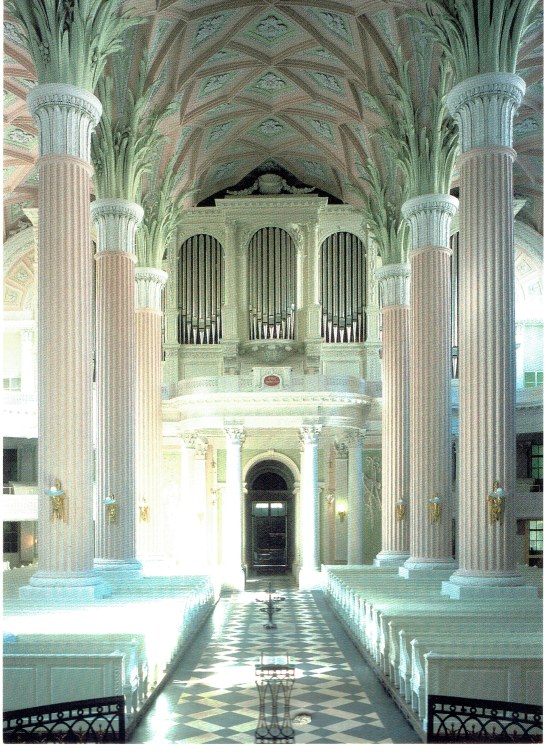
From a postcard of the Church of St. Nicholas
I admired the architecture of the impressive church. Although originally constructed in Romanesque style during the 12th century, it was transformed into a Late Gothic structure boasting three naves during the first quarter of the 16th century. Three steeples boast Baroque decoration. Now the prevailing style of the interior is classicist, a characteristic that the church took on in the late 18th century. I loved the palm tree capitals on the stately columns most of all, especially the pink and green colors. The pillars made the church appear even more lively. It was not just an architectural masterpiece with a past, but it felt like a masterful design with a present, too. I tried to imagine Bach performing here, as he has served as organist from 1723 to 1750. I tried to imagine Martin Luther preaching here as churchgoers became familiar with the Reformation. It was a profound experience, standing there, gazing at the gem of an interior.

The Church of St. Thomas
You could not miss the Bach monument in front of the Church of St. Thomas, which was constructed in 1212 as a monastery church for Augustinians. By 1355 the Romanesque structure had been transformed into Gothic style. Now it has a Late Gothic character with a late 15th century appearance. Real hair adorns Jesus’ head on a 16th century crucifix. The church holds the distinction of having one of the steepest gable roofs in the country.
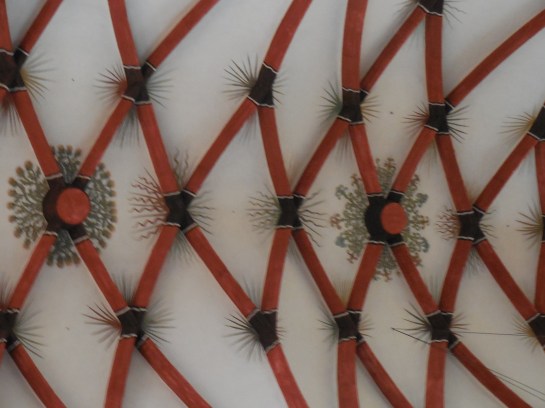
The ceiling of the Church of St. Thomas
The interior got a Neo-Gothic makeover during the revolutionary years of 1848 and 1849. Still, there were elements of the church that were much older than that. I saw a triptych altar from the 15th century, for instance, and even some Romanesque traits remain on the exterior. I especially liked the stained glass windows. Many people come here to pay homage to Bach, who worked as cantor here from 1723 to 1750. His grave is located in the choir.
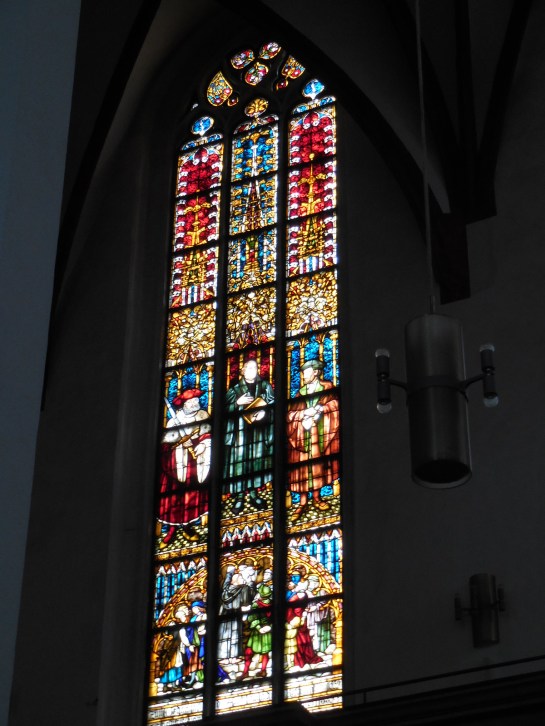
The stained glass windows at the Church of St. Thomas were extraordinary.
We also saw a modern church, built only several years ago. The interior was so sparse and minimalistic. There was a large wooden cross on one wall, and on the opposite wall another big cross was made of glass. I preferred Baroque and Gothic churches, definitely, but there was a profound sense of harmony in its simplicity. It ranked as an architectural gem in my book, though it was not my preferred style. There was something special about seeing this space stripped of frivolous decoration.


Built from 1899 to 1905, the New Town Hall was another gem, purposefully reminiscent of Florence’s Palazzo Vecchio. With an area of 10,000 square meters, it is one of the biggest town halls in the world. The tower reaches a height of 1,147 meters, making it the highest town hall tower in Germany. It was a pity there was not more time to spend examining this building, but we had a lot to see. The town hall fountain featuring creatures from fairy tales and a figure of a young boy playing a flute was a gem.

The New Town Hall
I was drawn to Klingerhaus, the birthplace of the 19th century Symbolist painter, sculptor and writer Max Klinger. I did not know much about Klinger, except that he had been influenced by Goya’s art. I recalled gazing in awe at Goya’s paintings in the Prado and at the artist’s drawings in the small, quaint contemporary art museum in Passau. I liked the Renaissance architecture of the building. I was particularly enthralled with the red gables and oriels that made the building look so dynamic.

Klingerhaus
We walked by Auerbach’s Cellar, a tavern Goethe had frequented and the inspiration for a scene in Faust. We went into the Mädler Passage, an arcade building that reminded me of another arcade structure in Naples. It was modeled after the Galleria Vittorio Emanuele II in Milan from 1912 to 1914 and boasted a central rotunda. A Glockenspiel of Meissen china charmed audiences on the hour.

The Old Town Hall
I ate a hearty lunch in a narrow Baroque court teeming with restaurants and cafés – there were over 30 of them, in fact. Then I made my way to the Old Town Hall across the square. The first Renaissance hall in Germany, it was constructed in 1556. It was heavily damaged by bombing during World War II but rebuilt. The city administration worked here until 1905, and soon afterwards the Museum of City History opened in the impressive space. Shops were situated amidst the lovely arcades. I loved the gables and tower clock.

The interior of the Old Town Hall
At the Museum of City History, I learned that the history of Leipzig is, in effect, the history of Germany and former East Germany. A remarkable exhibition of modern history from the revolutionary years of 1848-49 to the present enthralled me. Rarely have I been so enlightened and moved by an exhibition. Citizens were not satisfied with the political situation in 1848 and revolted, hoping to gain a constitution for Germany, among other goals. But it was not to be. The city became a central point for the German labor movement, German social democracy and women’s movement from the 1850s to 1871, when the German Empire was founded. Jewish fur traders flocked to the city, and their businesses flourished. Indeed, before World War I Leipzig was thriving.

The interior of the Old Town Hall
From 1918 to 1933 Leipzig found itself in the Weimar Republic, an era that had to deal with the political and economic issues that followed the war. Yet Leipzig experienced the Roaring Twenties, and when things turned for the worst, the Great Depression of 1929. Then, in 1933, the National Socialists took control. The city was subject to much bombing during the war, and forced laborers toiled in the city during the war. US troops liberated Leipzig in April of 1945, but in July the Americans turned over the city to the Soviets. The German Democratic Republic was established in 1949, as Leipzig then became part of the totalitarian East Germany. Companies were nationalized, and cheaply built housing estates cropped up. Before the Berlin Wall was built in 1961, thousands of citizens escaped to the West. At the end of the 1980s, more inhabitants made it to the West. During the 40th anniversary of East Germany, the state employed violence to repress demonstrations. The Peaceful Revolution began on October 9, 1989, and the Leipzig protests would play a major role in the collapse of the Communist regime. In 1990, after 58 terror-ridden years led by dictators, democratic elections were held in Leipzig. There was much construction, and Leipzig earned the nickname “the Boomtown of the East.”

From the Museum of City History exhibition about the modern era
The exhibition also focused on book publishing in Leipzig, which played a major role from the 18th century up to World War II. Until 1945, the biggest book fair in the world took place in Leipzig, and now the city hosts the second largest book fair in Germany. The exhibition also concentrated on Leipzig as a city of music, mentioning Bach, Mendelssohn, Schumann, Grieg, Wagner and others who greatly influenced the town.

From the Museum of City History exhibition of the modern era
There were many places in Leipzig that I did not have time to explore. For instance, I would have loved to have visited the museums in the former houses of Mendelssohn and Schumann. I longed to see the richly decorated facades of buildings on the Brühl, where, at the turn of the 20th century, 700 fur companies had been located. I would like to linger in the Baroque Coffee Baum, where famous musicians had once gathered. The Memorial Museum, at the site of the former State Security forces, would certainly allow insights into the terror-ridden years as part of East Germany. There are other museums that I wanted to visit as well– the Grassi Museum of Applied Arts and the Museum of Fine Arts are just two examples.
During my day in Leipzig, I gained so much knowledge about life in the city and in Germany, especially from the middle of the 19th century to the present. I was won over by the architecture, both modern and historic. I left Leipzig, knowing I had to return in the not-so-distant future. Its strong impression will forever be stamped in my memory.
Tracy A. Burns is a writer, proofreader and editor in Prague.





